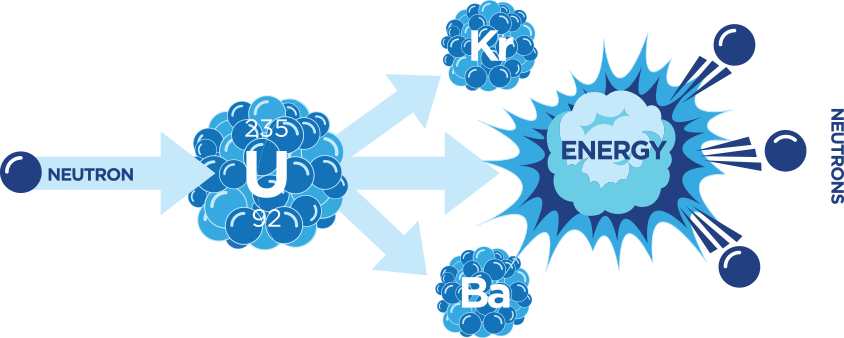Nuclear fission is the process of splitting of a heavy nucleus into a number of lighter nuclei with the liberation of a large amount of energy. For example, when uranium 235 is bombarded with slow moving neutrons, it breaks up into two light-weight atoms barium 141 and krypton 92 with emission of three neutrons and a great amount of energy. This reaction can be represented as:
92U235 + 0n1 ![]() 56Ba141 + 36kr92 + 30n1 + Energy
56Ba141 + 36kr92 + 30n1 + Energy
Uranium Neutron Barium Krypton Neutrons
The energy produced during nuclear fission (splitting of an element) is used to produce electricity. It should be noted that a large amount of energy is produced during nuclear fission reaction because some mass disappears in this process i.e. sum of the masses of products formed in nuclear fission is slightly less than the sum of masses of reactants. This loss of mass is converted into energy. The loss of mass of reactants is called nuclear decay.

The energy released in the nuclear reaction is expressed in the unit of Million
electron Volts (MeV). One MeV is equal to 1.602 × 10-13 J. On an average about 200 MeV energy is released during fission of one nucleus of U-235.
Test Your Understanding and Answer These Questions:
- What is nuclear fission?
- What is nuclear decay?
- What is splitting of an atom?
- What amount of energy is released during nuclear fission reaction?
